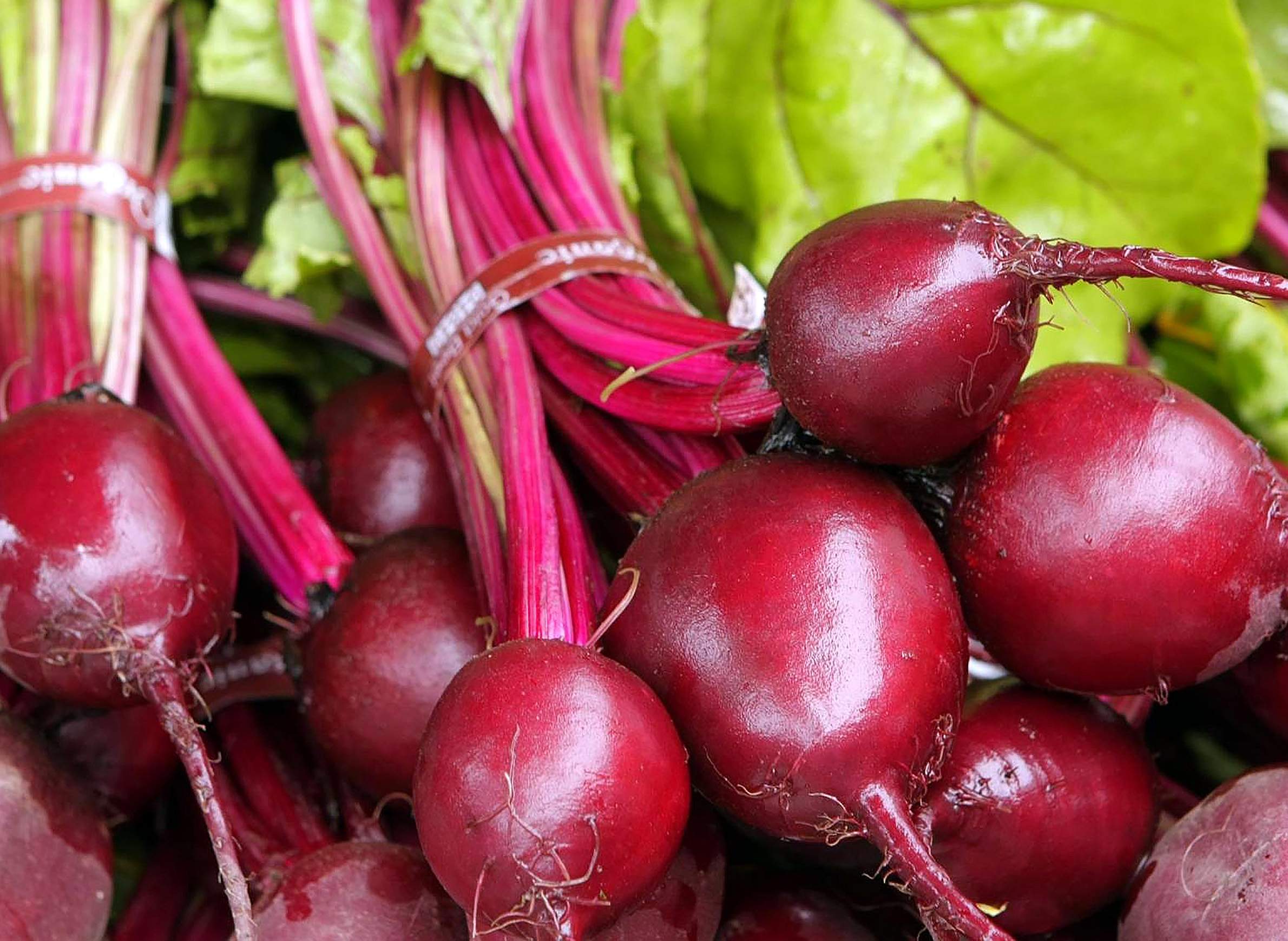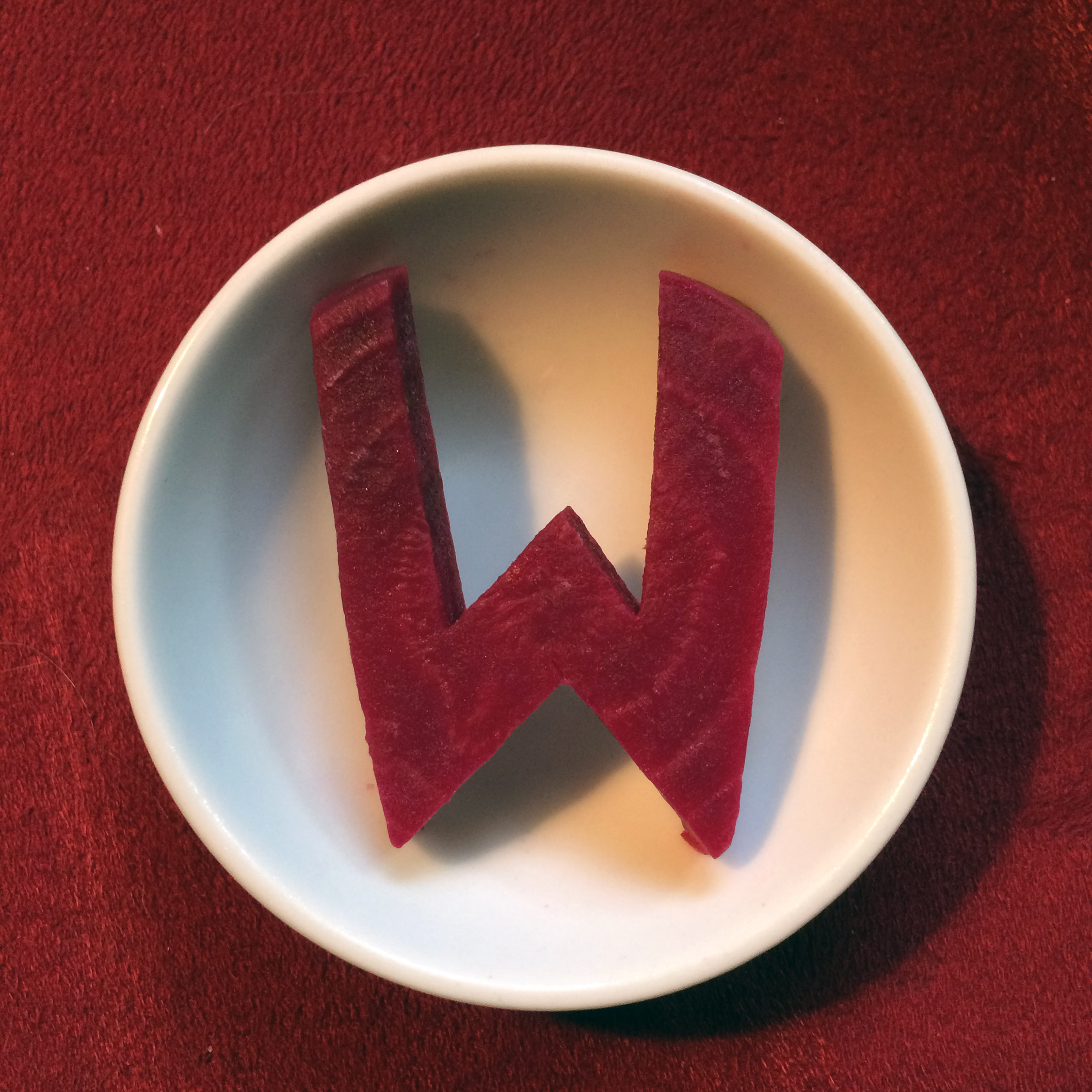
Learning To Love The Earthy Flavors Of Table Beets

The humble beet has come a long way to fields and vegetable gardens from its roots as a leafy green growing wild in the sandy soil of the Mediterranean.
In ancient times, Greeks and Romans cultivated this ancestor of the modern beet in their gardens for food and used the roots for medicinal purposes. So how did beets (Beta vulgaris) develop into the bulky root vegetables that are grown today?
Geography and human migration played a role in this transformation, said Amy Freidig, a program assistant with the Wisconsin Master Gardener program. She traced the origins of beets in a February 11, 2017 talk at the Wisconsin Garden Expo, recorded for Wisconsin Public Television's University Place.
"It didn't just magically happen," Freidig said. "There wasn't reference to these swollen- rooted types until the 16th century."
Freidig explained that as agriculture expanded into northern Europe, crops faced a shorter growing season and harsher winters, and so people began cultivating the plant for its roots.
"It was a good, solid sugary food source that could store really well throughout the summer," Freidig said. "So they keep selecting and propagating these beets that are big, and keep selecting for the type of characteristics that are going to get it closer and closer to the beets that we’re used to today."
Both sugar and table beets are grown commercially in the United States. Sugar beets have been a major crop in states such as Minnesota and Michigan, but are barely grown in Wisconsin. Commercial production of table beets is small in comparison to many other crops, but of the national acreage devoted to the vegetable, approximately half is in Wisconsin.
Wisconsin is an important center for beet research. At the University of Wisconsin-Madison, horticulture professor Irwin Goldman runs the only publicly funded lab in the U.S. focused on the breeding and genetics of table beets. The lab is also one of only a few that focus on carrot and onion breeding. The Goldman Lab has released a number of inbred lines of vegetables, open pollinated varieties and germplasm for use by breeders worldwide. Among its cultivars are the Badger Flame, the Badger Sunset and the Badger Torch, characterized by their elongated shape and yellow and orange colors.
Seeds for the Badger Flame beet were made commercially available in 2018. The company marketing the seeds, Row 7, aims to connect breeders with chefs around the country whose feedback will guide future research.
As a graduate student, Freidig worked in Goldman's lab. Some of her research involved digging into the presence of geosmin in beets. The compound, which is also produced by certain soil microorganisms, gives table beets their characteristic, and sometimes loathed, earthy flavor.
Freidig looked at several different cultivars of beets to see which had higher levels of geosmin. She grew a variety of beets in several locations over the course of two years, then used a gas chromatograph mass spectrometer to measure their volatile compounds. She found that the Touchstone Gold, a golden beet, produced the lowest level of geosmin. The highest level of the compound was found in the Bull's Blood and Chioggia varieties, as well as the sugar beet.
"This was interesting because people will come up to you and say, you know, 'oh, the yellow beets, I like them more. They're sweeter.' Well, are they necessarily sweeter? Or maybe people reacting to a lower geosmin level? It doesn't taste as earthy. It doesn't taste like dirt. So people think it's sweeter" Freidig said.
Freidig said she first became enamored of beets as an undergraduate, while taking a course on vegetables grown around the world.
"Honestly this is a love story," Freidag said. "I really love talking about this vegetable."
Key facts
- Sea beets (Beta vulgaris subsp. maritima), the ancestor of modern table and sugar beets, as well as Swiss chard, originated on the shores of southern Europe, northern Africa and southern Asia. Still growing in the wild, they are leafy vegetables and can be foraged and eaten.
- Beets are a biennial crop, meaning that they take two years to complete their biological life cycle. While the plants are typically harvested for their edible roots, they may be overwintered in milder climates and will produce flowers and seeds the following season.
- Table beets can be cultivated as garden vegetables. The plants prefer loamy, well-drained soil, but can also be grown beets in heavier clay soil as long as it is kept moist. Seeds should be planted about two inches apart and thinned as they grow.
- The table beet (or beetroot) and its closely related relatives, the mangel beet (or mangelwurzel) and the sugar beet are part of the Amaranthaceae family of plants. Spinach, chard, lamb’s quarter and quinoa are also members of this family.
- Mangel beets grow to a size of 15 to 20 pounds and two feet long. They are primarily grown as livestock feed, but can be eaten by humans when small.
- Sugar beets account for 55 to 60 percent of all the sugar produced in the United States. The largest U.S. region for sugar beet production is in and around the Red River Valley of northwestern Minnesota and eastern North Dakota. According to the U.S. Department of Agriculture, the number of farms in the nation growing sugar beets has declined slightly, but their average yield has risen.
Key quotes
- On the uniqueness of beets and their role in family food memories: "The neat thing about this vegetable is a lot of people have a story to tell about them. How they love them. How they hate them. How they grow them. How they can't get them to grow. How they eat them. I've even had someone tell me about their grandma's Harvard Beet recipe. There's always a story."
- On when to plant beets: "This is a great crop to do a multiple planting of. You can do one earlier in the season and then later to have a fall crop. If you're growing Swiss chard, you can do that as well if you wish. When you harvest stuff that's gone through the heat of the summer, especially if you're eating your beet greens too, or your Swiss chard leaf crop, those are going to be a little, little less palatable in the heat of the summer. And beet roots that you are going to eat and harvest in the dead of summer might be a little woodier because of the temperature."
- On the ease of growing beets: "I have found that beets are pretty easy to grow. And most people have some good luck doing it. I mean, even my two-year-old can take a handful of seeds and kind of smear them around and we still end up getting beets."
- On the popularity of beets: "Beets have kind of enjoyed a renaissance over the past number of years. You can definitely find more beet greens in salad mixes, for example. They're harvested when they're about six to nine centimeters long and you can harvest them off of your own plants and eat them. You can sauté them like you do chard, or you can use them in a salad as well. And because of that beautiful pigment in there, they add a really nice splash of color."
- On the betalain pigments that give table beets their distinctive colors: "The red pigment is called betacyanin, and the pigment that does yellow is betaxanthin. This pigment is also found as a food colorant. In the late '70s, interest arose in finding an alternative to synthetically produced food dyes. So they started looking at the table beet. But the issue with that is you've got this root that's, yes, filled with pigment, but also water and sugar. You have to distill that pigment down, get rid of that other stuff. And that takes time and it costs a lot of money. So breeding efforts were undertaken at the University of Wisconsin, and what they were doing was breeding for a concentrated pigment in a beet. And they were successful, so much so that by, when it was last looked at in 2008, it was only two-and-a-half times more expensive to produce food dye from these betalain pigments than its synthetic counterpart, which is really a success story."
- On the commercial use of beet juice in other products: "It's found like everywhere now. I mean, you can look in powdered drink mixes, cosmetics, meat products, yogurts, ice creams. I saw beet juice used as food dye in frozen salmon patties the other day. Who would have thought? ... Go to your store, you'll be surprised. The beet is everywhere."



